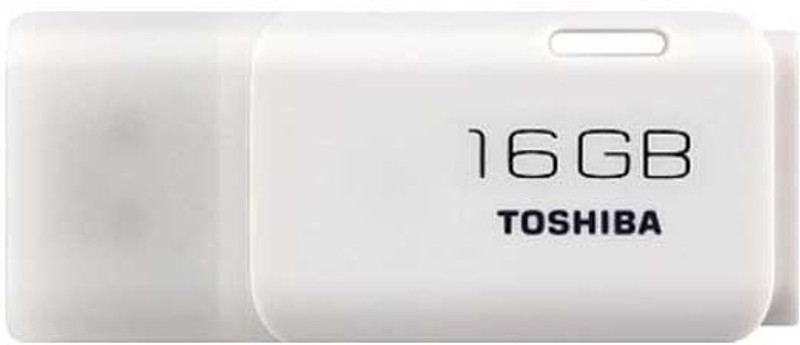Gaming Laptops Or Standard Laptops: What Is The Difference Between The Two?

In today's digital world, a laptop is more than just a tool for work or study- it's a gateway to entertainment, creativity, and even gaming. But when you venture into the realm of laptops, one burning question often arises: should you opt for a gaming laptop or a standard one? Both categories have their advantages, but which one truly fits your lifestyle?
Gaming laptops have garnered a reputation for being high-powered machines, designed to handle demanding tasks like 3D gaming and video editing. On the other hand, standard laptops, while not geared towards high-intensity applications, are perfect for everyday tasks and offer portability at an attractive price point.
Dive into the key differences between gaming laptops and standard laptops, exploring factors like performance, design, battery life, and price. Whether you're a gamer looking for the ultimate machine or a student simply needing a reliable device for browsing and homework, we've got you covered.
1. Performance: The Heart Of The Matter
When it comes to performance, the differences between gaming laptops and standard laptops are vast. Gaming laptops are built with power in mind, offering top-tier processors, high-end graphics cards, and substantial RAM. This is essential for running graphically demanding games and software that require significant computational power. A typical gaming laptop will often boast Intel Core i7 or i9 processors, accompanied by dedicated GPUs like NVIDIA's GeForce series, which ensure smooth, high-quality gaming experiences.
In contrast, standard laptops are designed for tasks like web browsing, document editing, and media streaming. While their performance is more than enough for these daily activities, they don't usually come with dedicated graphics cards. Instead, they rely on integrated graphics, which are less capable when it comes to processing complex visuals or running resource-heavy applications. If you plan on gaming or editing videos, the difference in performance becomes quite apparent.
2. Graphics: A Visual Treat Or Just Enough?
Graphics are where gaming laptops truly shine. Gamers demand vivid, fluid, and detailed visuals to fully immerse themselves in their virtual worlds. To deliver this, gaming laptops are equipped with dedicated graphics cards that can handle intensive tasks such as rendering 3D environments and managing high-resolution textures. These GPUs, often powered by companies like NVIDIA or AMD, ensure that every frame is rendered smoothly, even during fast-paced action scenes.
Standard laptops, however, tend to use integrated graphics, which are sufficient for less demanding tasks. While they can handle tasks like watching videos, browsing social media, and light gaming, they're not built for the heavy lifting required in modern gaming. If you're a casual gamer or someone who only occasionally plays games, a standard laptop will get the job done, but don't expect the same level of visual quality or smoothness that a gaming laptop provides.
3. Design And Portability: Size Does Matter
One of the most noticeable differences between gaming laptops and standard laptops is their design and portability. Gaming laptops are typically bulkier, and heavier and feature larger screens. This is because they house more powerful hardware, which requires additional space and advanced cooling systems. The design is often flashy, with LED lights, angular lines, and bold colours, reflecting their high-performance nature.
Standard laptops, on the other hand, tend to be sleeker and lighter, with a more minimalist design. Their thin, compact form makes them ideal for students or professionals who need to carry their devices around all day without feeling weighed down. While gaming laptops may look cool and impressive, they're not exactly the most travel-friendly option if portability is your primary concern.
4. Battery Life: A Marathon Or A Sprint?
Battery life is a crucial factor when deciding between a gaming laptop and a standard one. Gaming laptops, with their powerful components, tend to consume a lot of energy. As a result, most gaming laptops offer a battery life of just 3 to 6 hours under normal use, and significantly less during intense gaming sessions. This can be frustrating if you need your laptop to last a whole day of work or study without hunting for an outlet.
Standard laptops, by contrast, are designed for efficiency. Without the power-hungry gaming components, they can last much longer on a single charge, typically around 8 to 12 hours, depending on the model. This makes standard laptops the better choice for anyone who needs a long-lasting device for all-day use, especially when travelling or attending lectures.
5. Price: More Than Just A Number
One of the key distinctions between gaming laptops and standard laptops is the price. Gaming laptops, with their powerful hardware and specialised features, come at a premium. Prices for these machines can start at £1,000 and quickly climb into the £2,000+ range, depending on the specifications and brand. If you're looking for top-tier graphics, processing power, and cooling systems, you'll be paying for it.
Standard laptops, however, are generally much more affordable, with prices ranging from £300 to £800 for basic models. Even higher-end standard laptops with good processors and ample RAM tend to be more budget-friendly compared to their gaming counterparts. If you're after a device for everyday tasks like emailing, watching videos, or writing reports, a standard laptop will likely meet your needs without breaking the bank.
6. Cooling Systems: Keeping Things Cool Under Pressure
Gaming laptops are equipped with advanced cooling systems to prevent overheating during intense gaming sessions. The powerful processors and graphics cards generate a lot of heat, so manufacturers include multiple fans and heat pipes to ensure the laptop doesn't overheat. While this keeps the laptop running efficiently, it also makes gaming laptops louder than standard laptops, as the fans need to spin faster to cool down the components.
Standard laptops, on the other hand, have less demanding hardware, so they don't require such advanced cooling systems. They tend to be quieter and more energy-efficient. However, while they may not get as hot as gaming laptops, they can still heat up when running resource-intensive tasks like video editing or playing games, though the performance won't be as noticeable.
7. Upgradability: A Future-Proof Investment
Gaming laptops tend to be more upgradable than standard laptops, especially in terms of RAM, storage, and occasionally the graphics card. This means that, as new games or software demand more power, you can upgrade your gaming laptop over time to keep up with the latest technology. This level of customisation makes gaming laptops a good long-term investment for serious gamers who want to ensure their device remain relevant for years.
Standard laptops, in contrast, often have limited upgradability. While you can usually swap out the hard drive or add more RAM in some models, the options for upgrading are generally much more limited. This makes them a solid choice if you need a reliable device right now, but it's important to consider that you might need to replace the whole laptop in a few years if your performance needs to increase.
8. Use Case: Who Should Choose What?
When deciding between a gaming laptop and a standard laptop, the biggest question to ask is: what will you be using the laptop for? If you're a passionate gamer who enjoys high-quality, immersive experiences or you're working with resource-heavy applications like video editing software or 3D rendering tools, a gaming laptop will be your best bet. These machines are specifically designed to handle such tasks with ease.
However, if your daily use is limited to web browsing, watching movies, checking emails, and using productivity apps, a standard laptop will more than meet your needs. It's lighter, cheaper, and more energy-efficient, making it a great choice for students or professionals who need a reliable, no-frills machine for everyday use.
Products Related To This Article
1. Acer Aspire 3 Intel Core i5 11th Gen 1135G7
2. ASUS TUF Gaming F15 - AI Powered Gaming Intel Core i5 11th Gen 11260H
3. Acer Aspire 3 Intel Core i5 10th Gen 1035G1
4. MSI Thin A15 AMD Ryzen 5 Hexa Core 7535HS
5. Acer Nitro 5 AMD Ryzen 5 Quad Core 3550H
6. Acer Aspire 7 Intel Core i5 12th Gen 1240P
7. Thomson NEO Core Series Intel Core i5 12th Gen 1235U
8. Lenovo IdeaPad Gaming 3 AMD Ryzen 5 Hexa Core AMD R5-5600H
9. Acer Aspire 7 Intel Core i5 12th Gen 12450H
10. MSI Thin 15 Intel Core i5 12th Gen 12450H
11. HP Victus Intel Core i5 12th Gen
12. ASUS TUF Gaming A15 AMD Ryzen 5 Hexa Core 7535HS
13. Infinix GT Book Intel Core i5 12th Gen 12450H
14. Acer Aspire 7 Intel Core i5 13th Gen 13420H
15. ASUS Vivobook 16X for Creator, Intel Core i5 12th Gen 12500H
16. Acer Nitro V AMD Ryzen 5 Hexa Core 7535HS
So, when choosing between a gaming laptop and a standard laptop, it ultimately comes down to your personal needs and budget. If you're looking for raw power and premium features to support gaming or high-performance tasks, a gaming laptop is the way to go. But if you're after a portable, affordable device for everyday tasks, a standard laptop will serve you just fine. Both types of laptops have their strengths, and knowing what you want from your device will help you make the right choice. No matter which one you pick, rest assured that you'll have a reliable companion to help you navigate the digital world.
Disclaimer: The images used in this article are for illustration purposes only. They may not be an exact representation of the products, categories, and brands listed in this article.






























